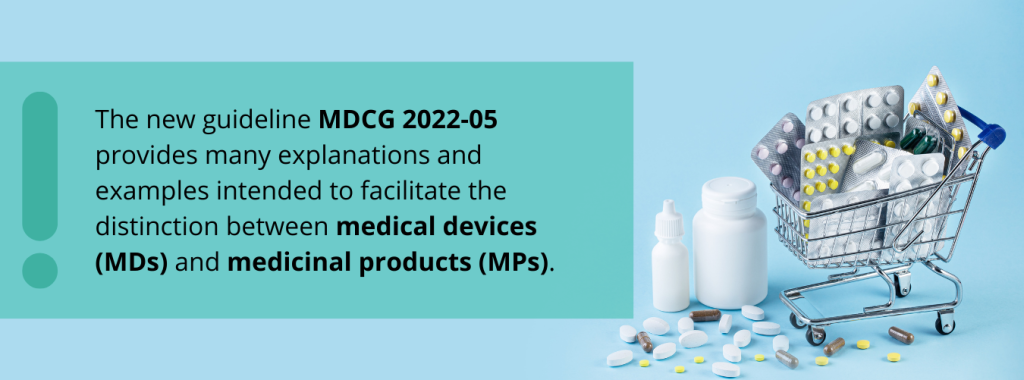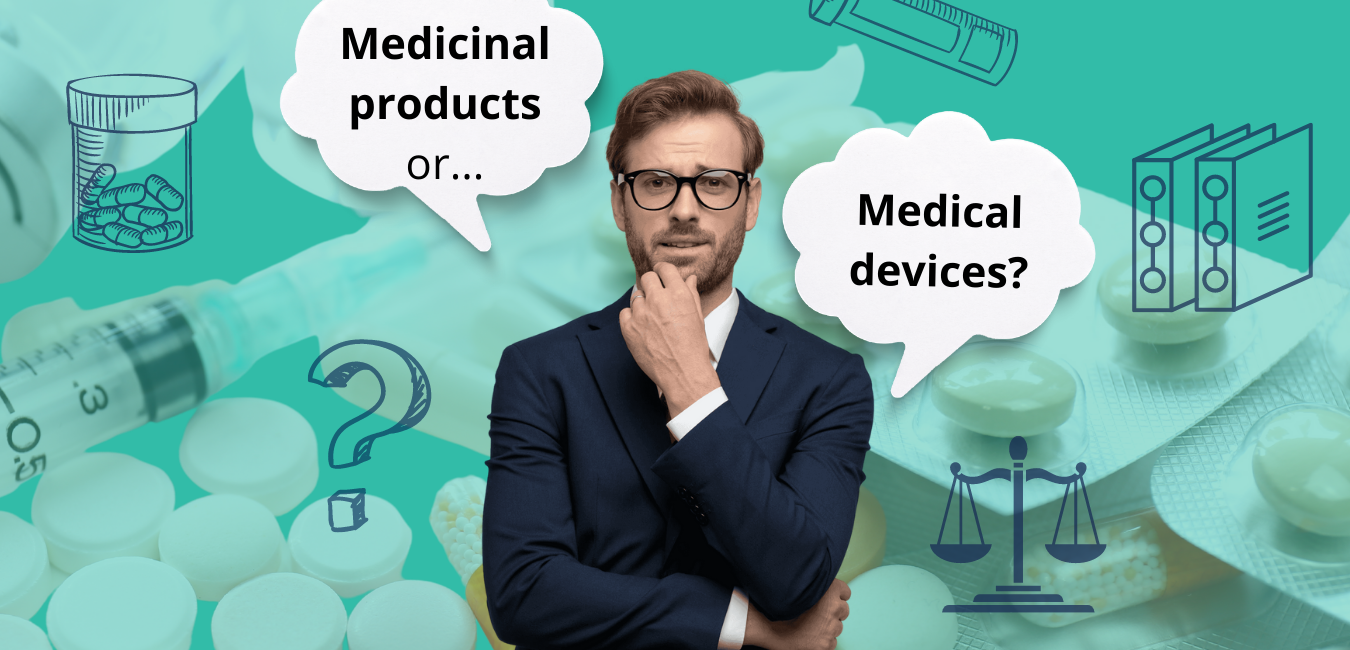Medical device regulation 2017/745 (MDR) entered into full application on May 26, 2021, but still a lot of uncertainty is associated with its implementation. So far, over 70 guidance documents have been published to assist stakeholders in applying MDR. Recently, a new Guidance on borderline between medical devices and medicinal products under Regulation (EU) 2017/745 on medical devices (MDCG 2022-05) has been issued by the European Commission’s Medical Device Coordination Group (MDCG), providing explanations and examples to better distinguish between medical devices (MDs) and medicinal products (MPs).
What has changed?
The new guideline replaced the Borderline Manual applicable to Directive 93/42/EEC (MDD), which was still in use, despite the MDD being amended by MDR. Borderline Manual was based mostly on the disputable case-studies, while MDCG 2022-05 focuses more on legal basis and MDR interpretation for the proper product classification. Such approach is reasonable considering limited experience with borderline products and their classification under new regulations.
The crucial aspect in the context of determining whether the product should comply with MDR or medicinal product Directive 2001/83/EC (MPD) is the product’s principal mode of action. A practical instructions on how to manage the classification, and justify if the product achieves (or not) its intended purpose by pharmacological, immunological or metabolic means, are provided by the new guideline.

Over and above product classification, MDCG 2022-05 gives examples of herbal substances which may lead to up-classification of the device to class III according to rule 14 (devices incorporating a substance which, if used separately, can be considered a medicinal product). It is noteworthy that MDR rule 14 is more rigorous than the corresponding rule 13 of MDD (Directive 93/42/EEC): MDR excludes the possibility to use lack of “liability to act upon the body” (due to, for example, low concentration) as a justification for not following the rule and not up-classifying the device. This has significantly raised the bar for MD manufacturers of lower-risk devices which now became class III devices with much more restrictive assessment and requiring a wider range of data to demonstrate compliance with the General Safety and Performance Requirements (GSPR). Also, in case rule 14 is applicable, the notified body should seek opinion on the medical aspects through a consultation process with a competent authority or EMA, according to section 5.2 of Annex IX, MDR.
For the patient
From the patient’s perspective, the new regulations force more restrictive assessment of devices combined with medicinal products or incorporating active substance of ancillary function, which assures better quality and safety of marketed products. On the other hand, for some MD manufacturers transition from MDD to MDR and up-classification of devices may be a difficult obstacle to overcome, and eventually make it unprofitable to continue placing the product on the market. In 2024, when last certificates issued in accordance with MDD become void, commonly available borderline products may disappear from the market, as a consequence of the approach imposed by MDR.
If you need support in the classification of your product or other aspects related to the introduction of medicinal products or medical devices to the market, please contact us. SciencePharma team will be pleased to assist you!

